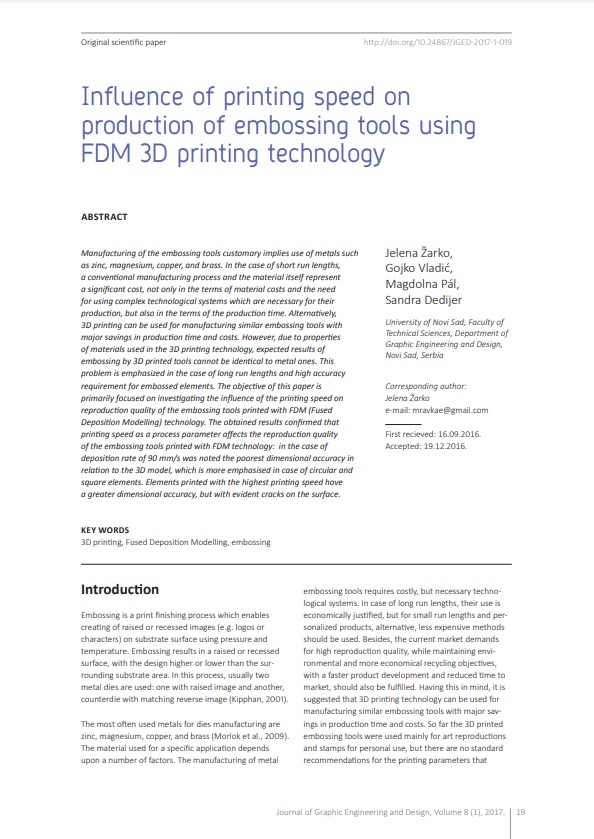Influence of printing speed on production of embossing tools using FDM 3D printing technology

Published 2017-06-01
abstract views: 707 // Full text article (PDF): 443
Keywords
- 3D printing,
- Fused Deposition Modelling,
- embossing
How to Cite
Copyright (c) 2017 © 2017 Authors. Published by the University of Novi Sad, Faculty of Technical Sciences, Department of Graphic Engineering and Design. This article is an open access article distributed under the terms and conditions of the Creative Commons Attribution license 3.0 Serbia.

This work is licensed under a Creative Commons Attribution 3.0 Unported License.
Abstract
-
Manufacturing of the embossing tools customary implies use of metals such as zinc, magnesium, copper, and brass. In the case of short run lengths, a conventional manufacturing process and the material itself represent a significant cost, not only in the terms of material costs and the need for using complex technological systems which are necessary for their production, but also in the terms of the production time. Alternatively, 3D printing can be used for manufacturing similar embossing tools with major savings in production time and costs. However, due to properties of materials used in the 3D printing technology, expected results of embossing by 3D printed tools cannot be identical to metal ones. This problem is emphasized in the case of long run lengths and high accuracy requirement for embossed elements. The objective of this paper is primarily focused on investigating the influence of the printing speed on reproduction quality of the embossing tools printed with FDM (Fused Deposition Modelling) technology. The obtained results confirmed that printing speed as a process parameter affects the reproduction quality of the embossing tools printed with FDM technology: in the case of deposition rate of 90 mm/s was noted the poorest dimensional accuracy in relation to the 3D model, which is more emphasised in case of circular and square elements. Elements printed with the highest printing speed have a greater dimensional accuracy, but with evident cracks on the surface.

